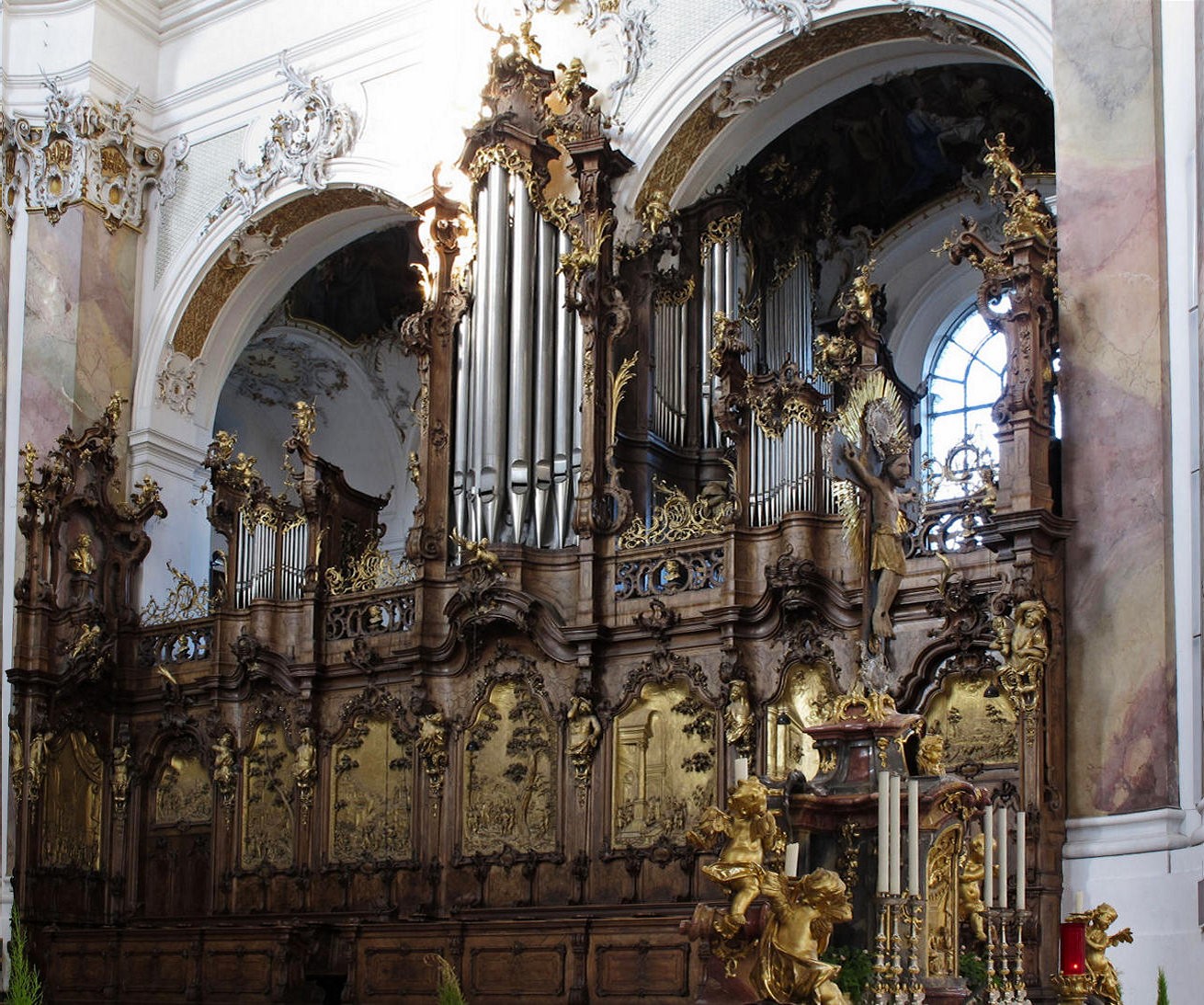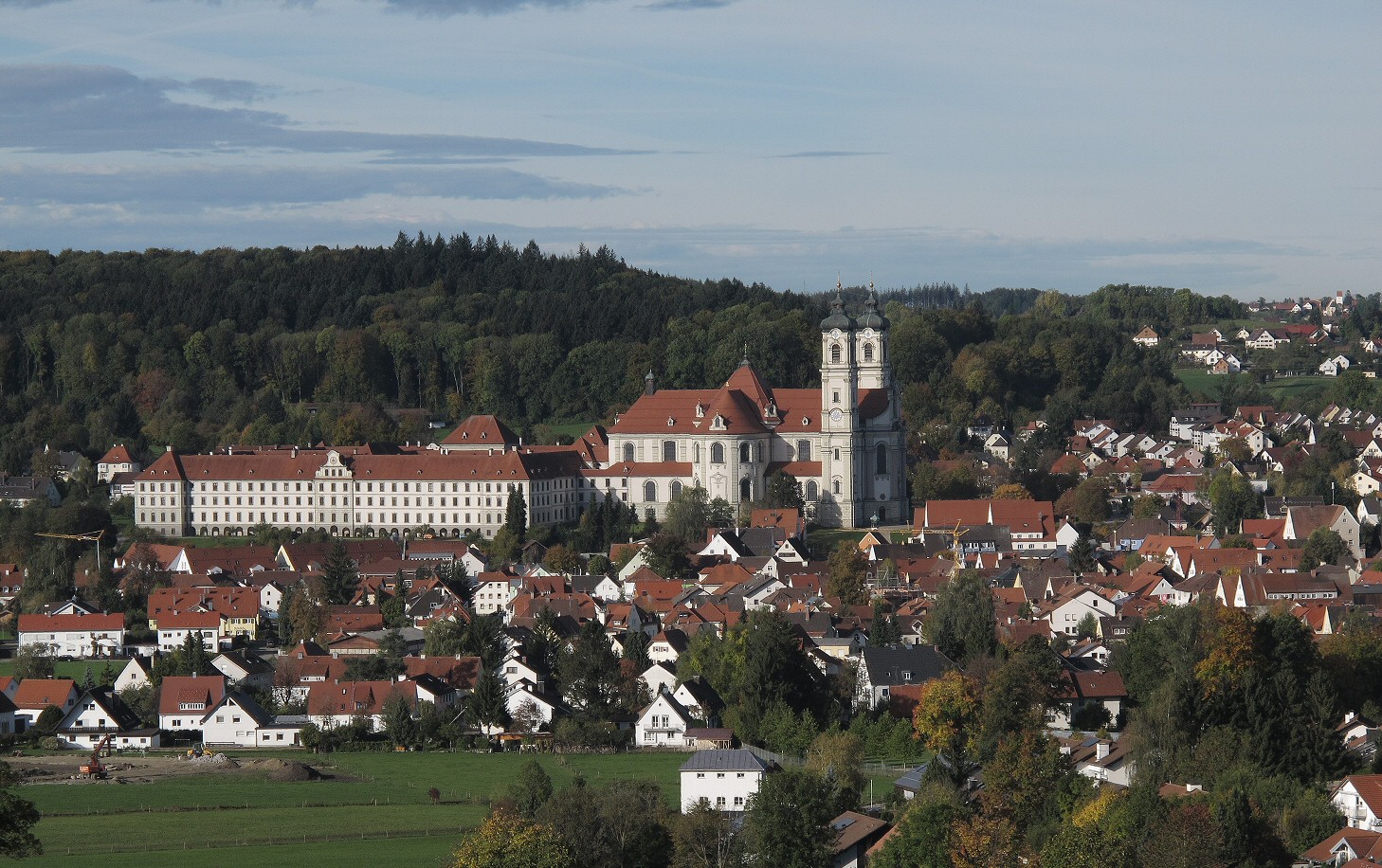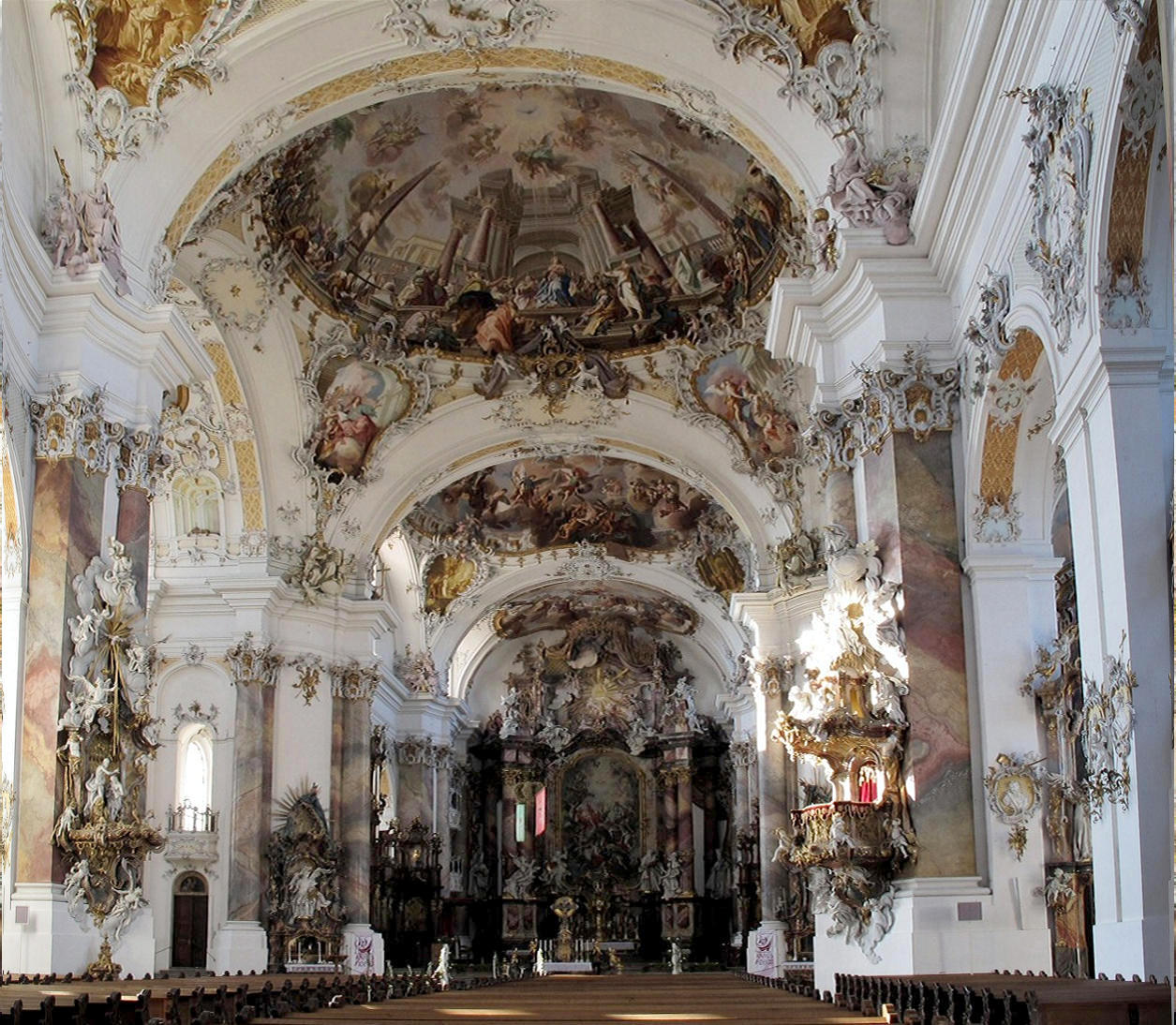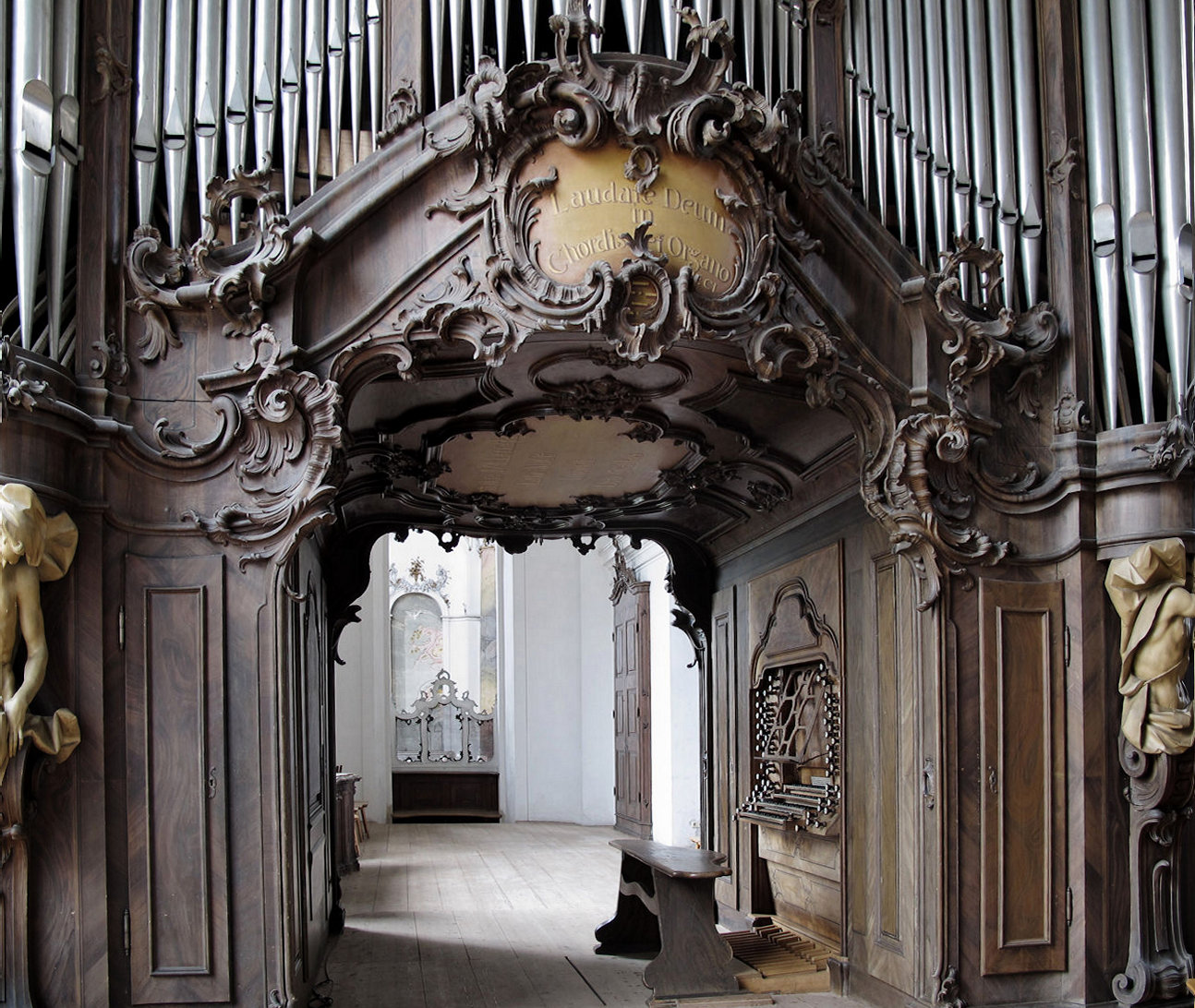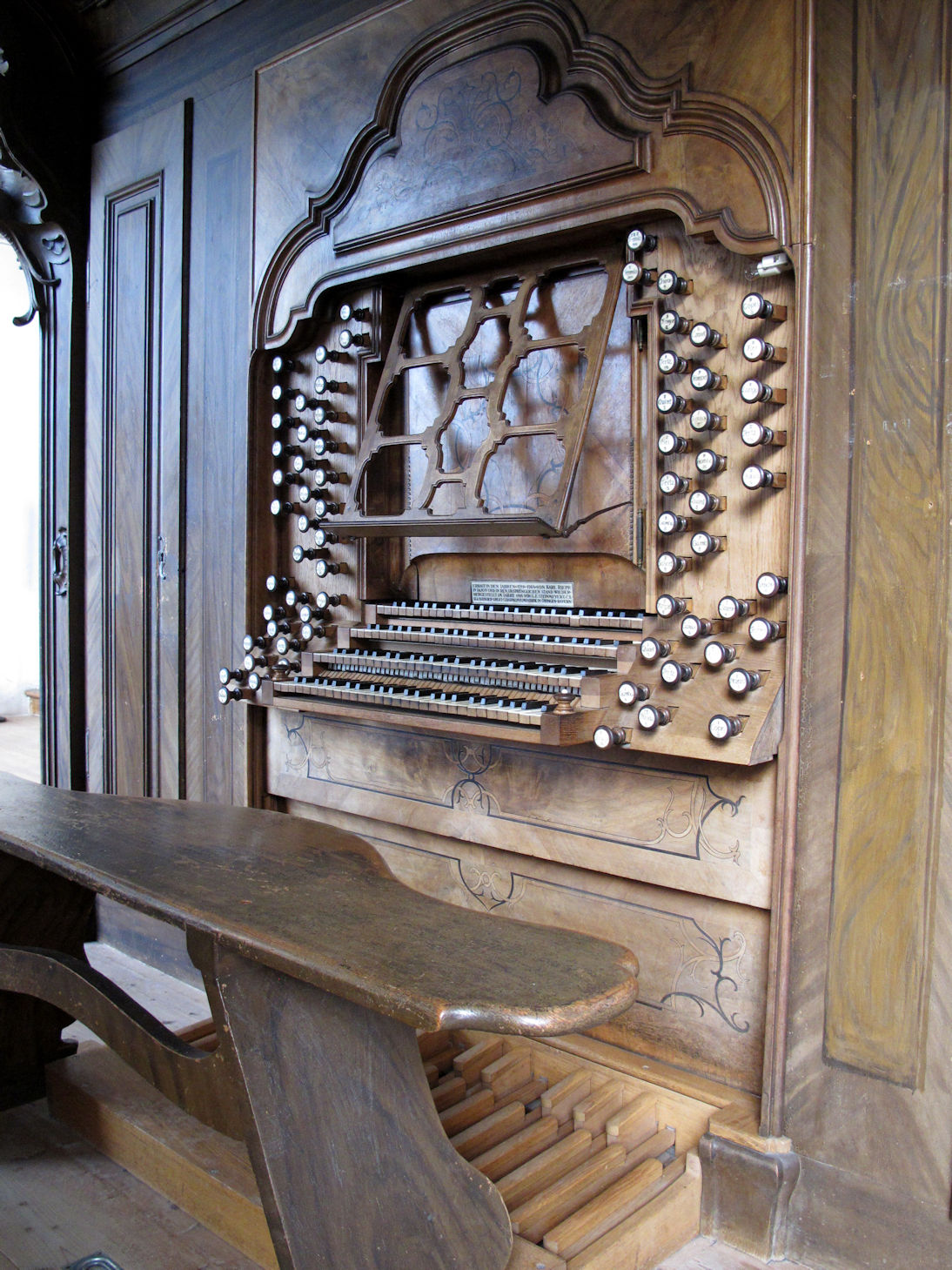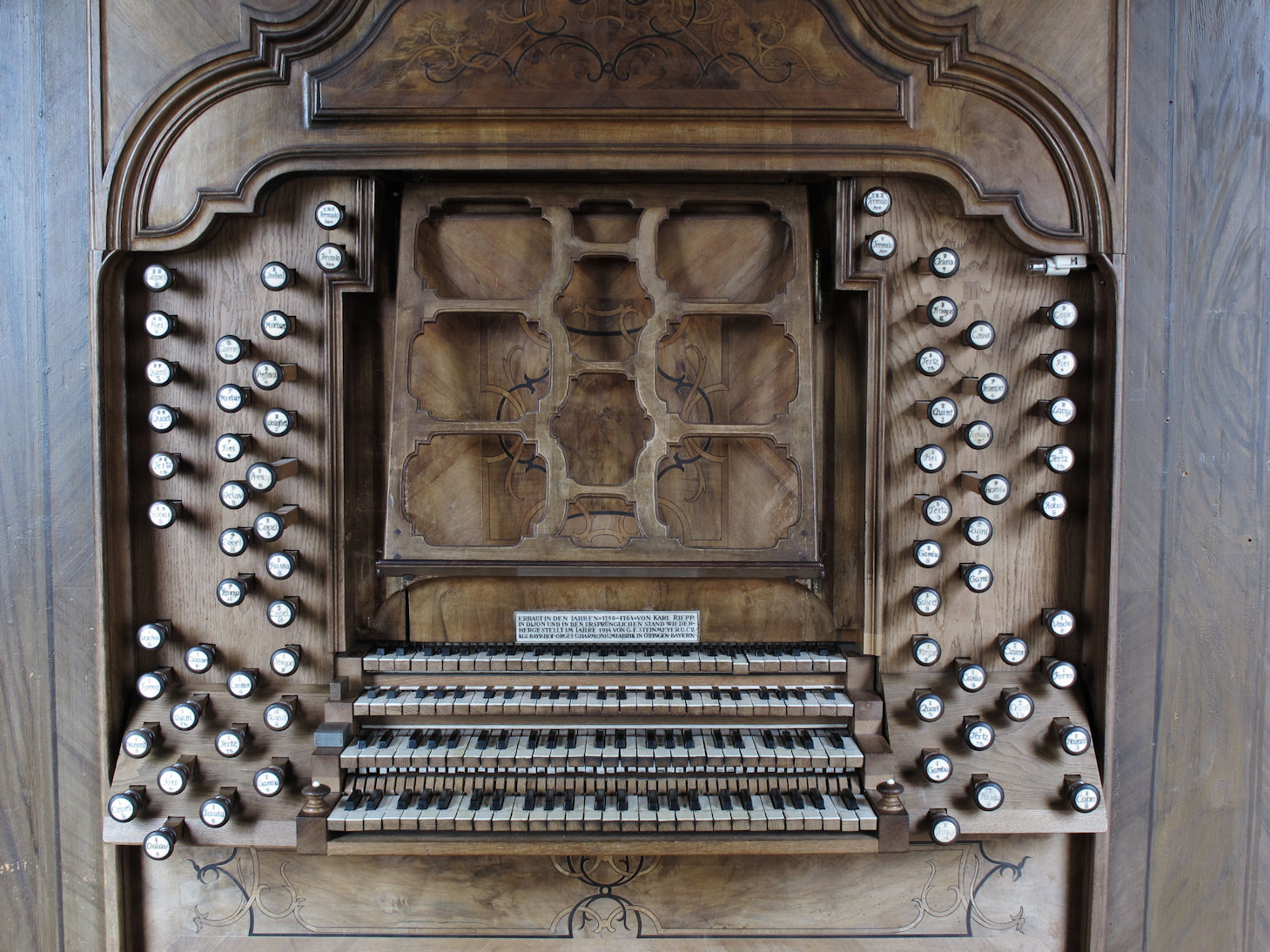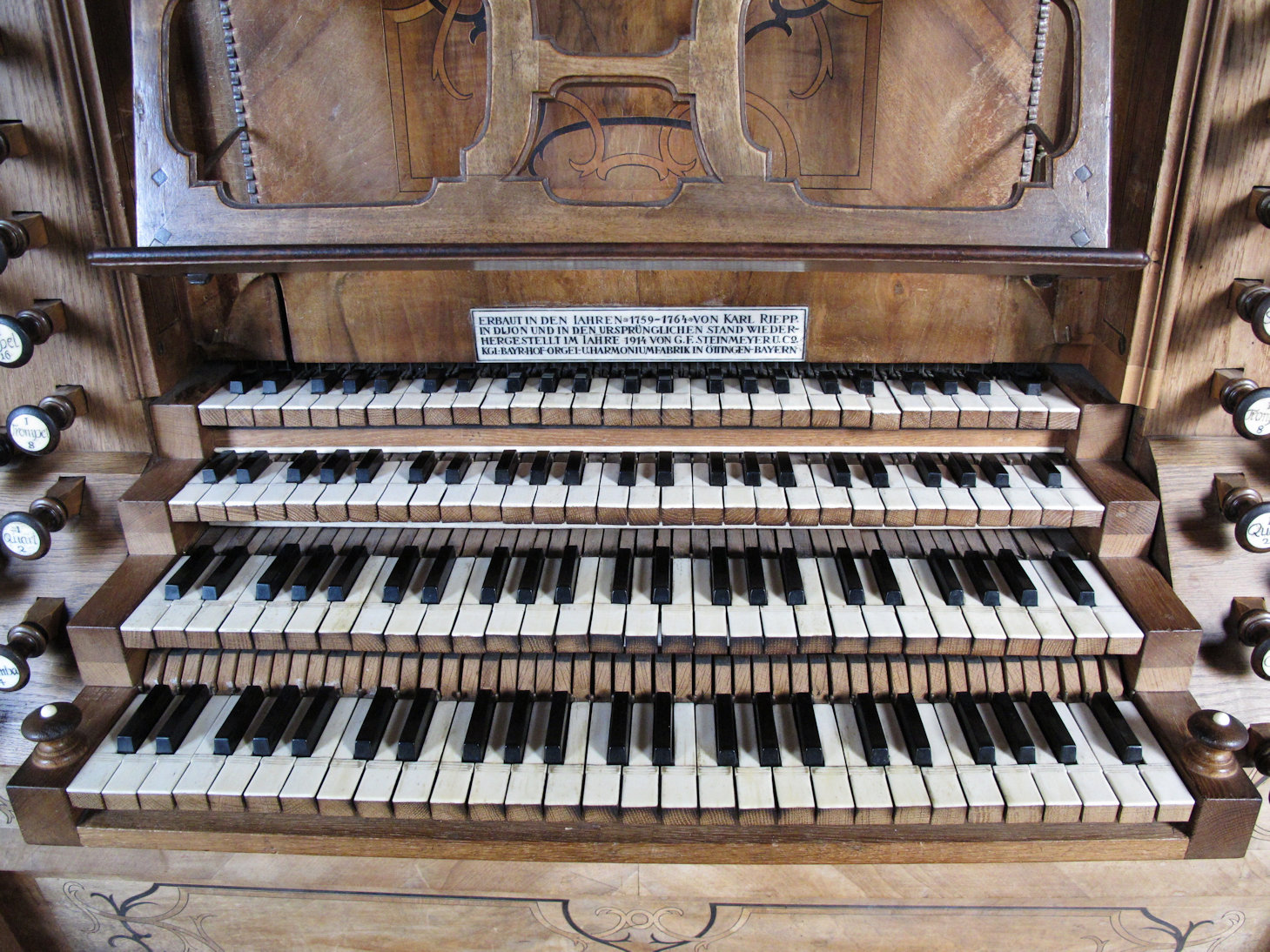Ottobeuren, Basilika St. Alexander und Theodor (Trinity Organ)
| Builder | K. J. Riepp |
|---|---|
| Year | 1766 |
| Period/Style | Baroque |
| Stops | 57 |
| Keyboards | 4+P |
| Keyaction | tracker/mechanical |
| Sampleset |
Available
 , sampled by
OrganArt Media
, sampled by
OrganArt Media
|
The smaller Holy Spirit Organ and the larger Trinity Organ at the Benedictine Abbey of Ottobeuren in Unterallgäu, founded in 764, are the only two nearly completely preserved original instruments crafted by Karl Joseph Riepp. These organs are treasured parts of the international organ heritage due to their construction, craftsmanship, unique architecture, and sound. They ingeniously merge French and South German sound ideals and are considered timeless treasures of organ music. The smaller Rococo-style Holy Spirit Organ is oriented towards South German traditions, while the larger Trinity Organ displays a characteristically French style.
Riepp's method of organ building is distinguished by its warm, full foundational tones, deep mixtures, powerful reed stops with full-length resonators, wide-scaled aliquots, and melodious flutes, with registers that blend exceptionally well. This masterful blending of styles and sounds makes these organs significant historical and cultural artifacts. Peter Williams describes the Trinity Organ as a "beautiful flower sown in France but cultivated in Germany," praising its sensual splendor and claiming it possibly represents the best Organo Pleno of its time.
The Rococo basilica housing these organs features an impressive reverberation time of up to six seconds in the choir area, enhancing the auditory experience and allowing the full richness of Riepp's organs to resonate beautifully within the space. These instruments not only demonstrate the technical and artistic heights of organ building of their time but also continue to be a source of musical and historical enrichment.
Riepp's method of organ building is distinguished by its warm, full foundational tones, deep mixtures, powerful reed stops with full-length resonators, wide-scaled aliquots, and melodious flutes, with registers that blend exceptionally well. This masterful blending of styles and sounds makes these organs significant historical and cultural artifacts. Peter Williams describes the Trinity Organ as a "beautiful flower sown in France but cultivated in Germany," praising its sensual splendor and claiming it possibly represents the best Organo Pleno of its time.
The Rococo basilica housing these organs features an impressive reverberation time of up to six seconds in the choir area, enhancing the auditory experience and allowing the full richness of Riepp's organs to resonate beautifully within the space. These instruments not only demonstrate the technical and artistic heights of organ building of their time but also continue to be a source of musical and historical enrichment.
| Brüstungs-Positiv | Hauptwerk | Récit | Echo | Pedal |
|---|---|---|---|---|
| Princip 16 | Copel 16 | Cornet Resi | Copel 8 | Princip 16 |
| Copel 8 | Princip 8 | Copel 8 | Flet 4 | Copel 16 |
| Flauta 8 | Copel 8 | Flet 4 | Quint 3 | Octav 8 |
| Octav 4 | Flauta 8 | Quint 3 | Quart 2 | Gamb 8 |
| Flet 4 | Gamba 8 | Quart 2 | Tertz 1 1/2 | Quint 6 |
| Gamba 4 | Salicet 8 | Tertz 1 1/2 | Larigot | Flet 4 |
| Nazard 3 | Prestant 4 | Hoboi 8 | Tertz | Mixtur |
| Quart 2 | Flet 4 | Hoboi 8 | Bomba 16 | |
| Tertz 1 1/2 | Tertz 3 | Trompet 8 | ||
| Quint 1 1/2 | Quint 3 | Trompet 4 | ||
| Fornit | Waldflet 2 | |||
| Trompet 8 | Tertz 1 1/2 | |||
| Cromor 8 | Cornet | |||
| Voxho 8 | Mixtur | |||
| Clairon 4 | Cimbal | |||
| Trompet 8 | ||||
| Clairon 4 |
No Video/Audio samples available.
https://www.organartmedia.com/de/karl-joseph-riepp-3
 Pipe Organ Map
Pipe Organ Map